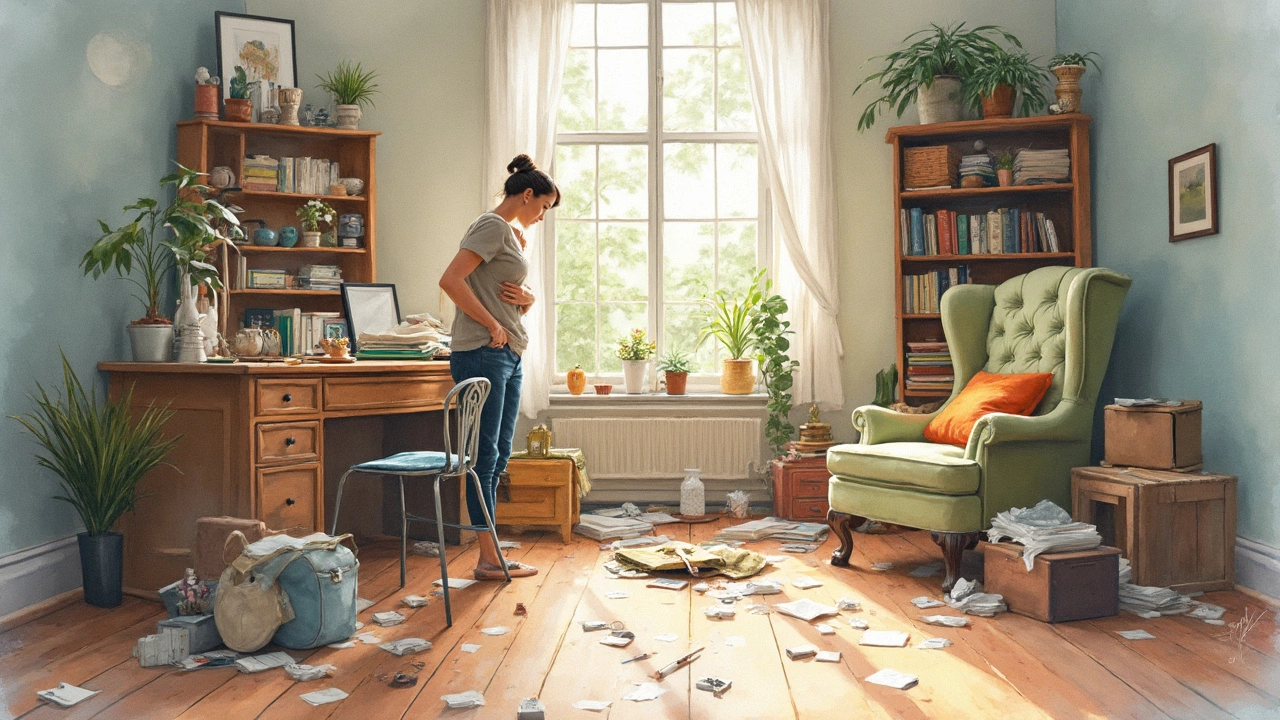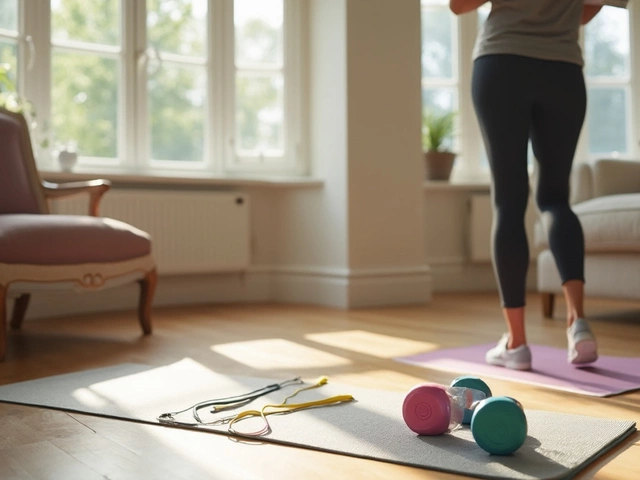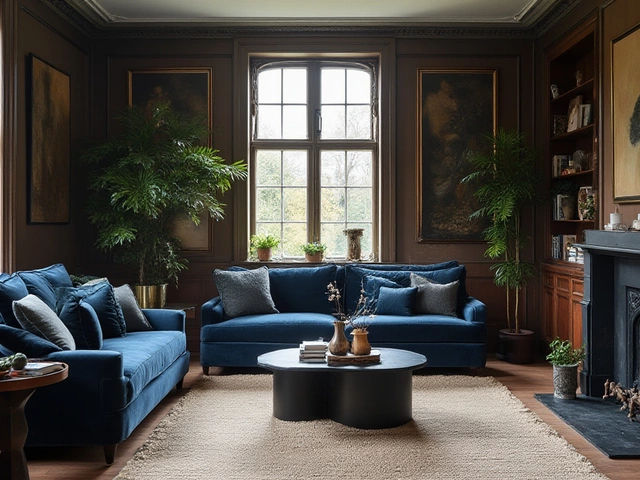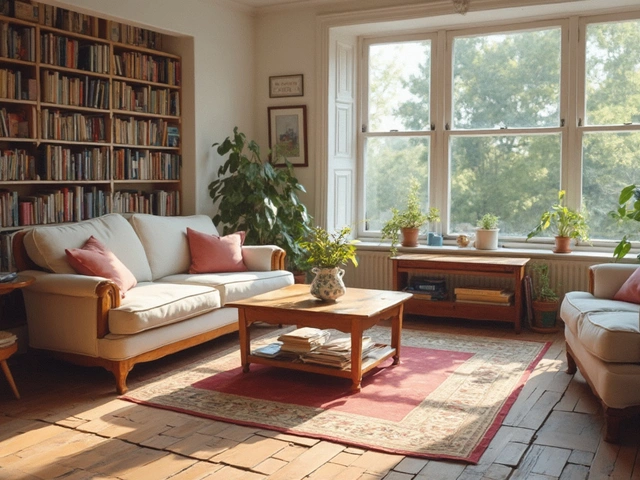Feeling overwhelmed by the chaos at home? Trust me, you're not alone. Kicking off a home organization project can seem like trying to tame a hurricane, but hold tight—I've got your back. Whether you've got piles of clothes that rival Mount Everest or a kitchen full of mystery gadgets, tidying up is more achievable than you might think.
Before you dive headfirst into bins and labels, it's all about mindset. Think of organizing not just as a chore, but as a little gift to your future self. A well-placed basket or a cleverly labeled jar can save you time and stress down the line, making everyday life just a tad smoother. So grab a cup of your favorite drink, take a deep breath, and let's tackle this together—step by step.
- Why Start Organizing Now?
- Decluttering Basics
- Sorting and Categorizing
- Choosing Storage Solutions
- Simple Labels, Big Impact
- Maintaining Your Organized Space
Why Start Organizing Now?
Ever wonder if clutter is more than just a physical mess? Well, you bet it is! Studies reveal that a messy home can lead to stress, and nobody wants that, right? Home organization isn't just about having a picture-perfect Instagram home, but about creating a space that makes you feel comfy and at ease.
Imagine waking up in the morning and knowing exactly where your keys, wallet, and phone are. Blissful, isn't it? Organizing your home helps you save precious time by eliminating those frantic searches for lost items.
And let's talk health. A well-organized space can improve air quality, because when everything has a place, there's less dust gathering. Plus, it means fewer tripping hazards, especially if you've got kids or pets around.
There's also the financial perk. When you see what you actually own, you avoid buying duplicates. You won't believe how many people buy another set of scissors just because they can't find the first one!
Need a motivational boost? Check this out:
| Benefit | Impact |
|---|---|
| Reduced Stress | 30% of people feel less anxious |
| More Time | Save up to 15 minutes a day |
| Better Focus | 20% increase in productivity |
So, why wait any longer? Starting small can lead to big changes, and soon enough, your home will be your personal oasis of calm and efficiency.
Decluttering Basics
Alright, so you've decided to tackle the clutter monster—good on you! Before anything else, let’s get the whole place down to less stuff. The essence of home organization is decluttering, because why store what you don't need? As the organizing guru Marie Kondo says, "The question of what you want to own is actually the question of how you want to live your life."
First thing's first: take it slow. Decluttering isn't a sprint; it's more like a marathon. Instead of biting off more than you can chew, start small. Pick a drawer, a closet, or maybe just one corner of a room. This isn't just about tossing stuff out—it's about figuring out what truly matters to you.
- Group Similar Items: Pull everything out and group like items together. Seeing how much of one thing you own can make decisions easier.
- Ask the Need Question: Hold each item and ask, "Do I need this?" or "When was the last time I used it?" If it hasn't been used in the past year, it might be time to let go.
- Three Box Method: Use three boxes for sorting: keep, trash, and donate. The donate box can be a lifesaver for gently used items someone else might love.
Numbers are your friends in this journey. Did you know the average American home is home to over 300,000 items? That's wild, right? Getting those numbers down can make your space and mind feel more breathable.
Here's a stat that might surprise you: people only wear 20% of the clothes they own on a regular basis! When you're organizing your closet, keep this in mind. It'll help make decisions about those 'just-in-case' outfits hanging in the back.
| Category | Average Items Owned |
|---|---|
| Books | 114 |
| Clothes | 162 |
| Papers | 2,435 sheets |
Remember, the point isn't just to get rid of stuff; it's about creating a tidy home where you actually enjoy being. Decluttering is the first step in the transformation. You're setting the stage for more efficient living. Keep those goals in mind and the vision clear, and soon, you'll be living in a space that truly reflects you.
Sorting and Categorizing
Alright, let's get down to the nitty-gritty of sorting and categorizing. First things first, you'll want to tackle one room or area at a time. Doing everything at once can be a bit much, even for the most energetic organizer, so let's keep it simple.
Start by setting up three main categories: keep, donate/sell, and toss. As you go through your belongings, decide where each item belongs. If something hasn’t been used in the past year, it’s probably safe to either donate or trash it. Have you been hanging on to a pair of jeans that haven’t fit in ages? They might find a happier home elsewhere.
Once you've sorted, the next step is categorizing what you're keeping. Group similar items together. It’s not just about putting things into random piles; think of it as a way to make your life easier. Keep everyday use items within easy reach while seasonal items can be stashed away a bit further. In your kitchen, for instance, try keeping spices closer to your cooking zone instead of buried behind pots and pans.
- Clothes: Sort by type—shirts, pants, whatever you’ve got. Bonus points if you can organize by color as well.
- Kitchen Items: Pots, pans, and utensils should live near where you use them.
- Office Supplies: Pens, paper, and tech accessories can hang out together.
This might feel like a lot, but get this: studies have shown that organized homes can actually reduce stress levels and lead to better sleep. So, while you're knee-deep in sorting, remember there’s a lovely side effect waiting for you at the end. Keep plugging along—you’re doing great!

Choosing Storage Solutions
When it comes to organizing your home, picking the right storage solutions can make all the difference. You don’t need to buy all the fancy organizers blasting your social media feeds. It’s about finding solutions that fit your space and lifestyle.
First up, think about your specific needs. Is the kitchen overflowing, or is it your bedroom that's a disaster zone? Tailor your storage picks based on the problem area. For example, if your closet feels like a battlefield, consider stackable bins or adjustable shelves to make the most of vertical space.
Clear containers are your organizing besties. They allow you to see what’s inside without needing a treasure map every time you hunt for something. Look for options with lids to keep dust out, especially for long-term storage. And don't overlook underutilized spots like under the bed or behind doors—it’s prime real estate for storing items you don’t need every day.
Here’s a quick list of versatile storage winners:
- Cube storage units: Perfect for books, baskets, or decorative bins. Great for living rooms or kids' rooms.
- Vacuum storage bags: Save precious closet space by compressing off-season clothes.
- Floating shelves: Awesome for adding storage without taking up floor space. Use them in the bathroom for extra towels or in the kitchen for spices.
- Over-the-door organizers: Ideal for shoes, accessories, or cleaning supplies. A real game-changer for small spaces.
According to a recent survey, homeowners who implemented targeted storage solutions reported a 30% increase in available space. That’s like gaining an extra room without moving walls!
Remember, the best storage solutions are those that actually get used. So, aim for functionality over frills, and select items that truly fit your day-to-day routine. Happy organizing!
Simple Labels, Big Impact
Sorting stuff into chunks that make sense to you is just the first part of home organization. To make sure everything actually stays in its new home, labeling is your secret weapon. Labels might seem like a small detail, but they can make a huge difference by keeping everyone in the house on the same page about where things belong.
Start by labeling boxes, bins, and even shelves. This isn't just for you—it's a lifesaver for anyone else who might be living with you or visiting. No more guessing games about where the pasta lives or where to stash that extra blanket!
When it comes to choosing labels, keep things clear and straightforward. For beginners, stick to using printed labels or a label maker if you have one. If you're feeling crafty, go ahead and design your own. Chalkboard labels or erasable tags work great in areas like the pantry, where you might switch things up now and then.
If you're going all out, color coding your labels can give you that next-level organization. For example, label all kitchen stuff in green and bathroom items in blue. Easy peasy!
Oh, and you know what else labels are great for? Kids' rooms or play areas. Labels help kids learn where things go, promoting responsibility. It's a win-win! According to a survey by the National Association of Professional Organizers, 53% of households who use labels find it easier to manage their daily routines.
Remember, labels aren't set in stone. If something isn't quite working, tweak it! Organization is an evolving process, especially for beginners. Whether it’s with printed labels or some witty DIY creations, those tags can make home organization a breeze.
Maintaining Your Organized Space
Congrats! You've wrestled your space into some semblance of order. But, keeping it that way? That's the real challenge. We all know how easy it is to slide back into old habits, so let's talk about how to keep your newly organized home from falling victim to clutter chaos again.
Routine is key here. Establishing a simple daily or weekly habit can make a world of difference. Try setting aside just 10 minutes a day to put things back where they belong. It's amazing what you can accomplish in such a short burst of time.
Why not make clean-ups a regular affair? An easy way to do this is to tie organizing to something you already do. Every Saturday morning coffee? Perfect time for a quick sweep through your tidy home. While it might seem minor, these little routines add up in managing clutter.
- Keep a declutter catch-all box somewhere handy. When something in the house feels out of place, pop it in there and revisit it once a month.
- Use reminders. Place sticky notes inside cabinets or on shelves as gentle nudges to maintain organization.
- Adopt a 'one in, one out' policy. For every new item you bring in, something old, broken, or unused has to go. Keeps things from getting too crowded.
Don't hesitate to involve the entire household. Make it a family project. Even kids can handle age-appropriate organizing tasks. Plus, it keeps everyone accountable, not just you!
Maintaining an organized space is really about staying on top of the small stuff before it becomes a giant mess again. See it as a cycle of minor tweaks instead of big overhaul projects. With these habits, keeping your space uncluttered will be second nature!





